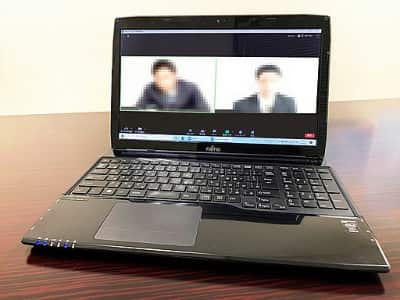This site is devoted to disseminating information about filled pauses and related phenomena in communication. Here, you can find academic information about these topics, musings on this and sundry other things as well as links to various resources that I've created that may elucidate why, how, and when people say 'um'.
News
News about the FPRC, research efforts, and other relevant stuff
Musings
Thoughts about hesitation phenomena and related topics
CHP
Info about and access to the Corpus of Hesitation Phenomena
Bibliography
A bibliography of related research articles and resources
DiSS
Info about the Disfluency in Spontaneous Speech workshops
What does a disfluency profile look like?
People vary widely in the manner in which disfluency appears in their speech. When it comes to filled pauses alone, there are people who use exclusively uh, others who use only um, and still others who seem to mix it up in some way. Some will use them only between utterances, while others (like me) will use them pretty much anywhere. There are some for whom the filled pauses are only long, drawn out articulations, and then there are others (again, like me) who use some filled pauses so quickly that the only way one would notice them is by listening to a recording afterward....

What's the difference between real-time and latent fluency detection?
.jpg)
I have been pushing the uniqueness of the Fluidity application as its capability to detect fluency features in real-time, maintain a constantly updating set of measurements, and adapt the operation of the application accordingly. This is in contrast to most applications in which fluency measurement takes place on a completed speech sample; that is, after the speaker has finished. Besides the technical differences between these two, is there any practical difference either to speakers or to listeners/computers related to this?...
Disfluencies in face-to-face versus video-mediated communication
There is some research to show that the use of filled pauses is different in face-to-face versus telephone conversations (cf., high rate of FPs in Switchboard versus low rate in Santa Barbara Corpus). In particular, speakers tend to use more filled pauses on the telephone. It has been hypothesized that the reason for this is that because the visual element is lost, speakers are more apt to try to manage conversational turns through additional vocal elements and thus, they might use filled pauses more often to "hold" their conversational turn. (Leaving aside the debatable question of whether speakers actually use filled pauses in that way or not.) A good question to ask now that video conferencing is becoming a ubiquitous form of communication is whether the use of disfluencies in video-mediated communication differ from those in regular face-to-face communication....

Recently added bibliography items
Audhkhasi, Kartik and Kandhway, Kundan and Deshmukh, Om. D. and Verma, Ashish
Betz, Simon and Bryhadyr, Nataliya and Kosmala, Loulou and Schettino, Loredana
Bóna, Judit
Degand, Liesbeth
Di Napoli, Jessica
View the whole FPRC bibliography list here.
 Home
Home